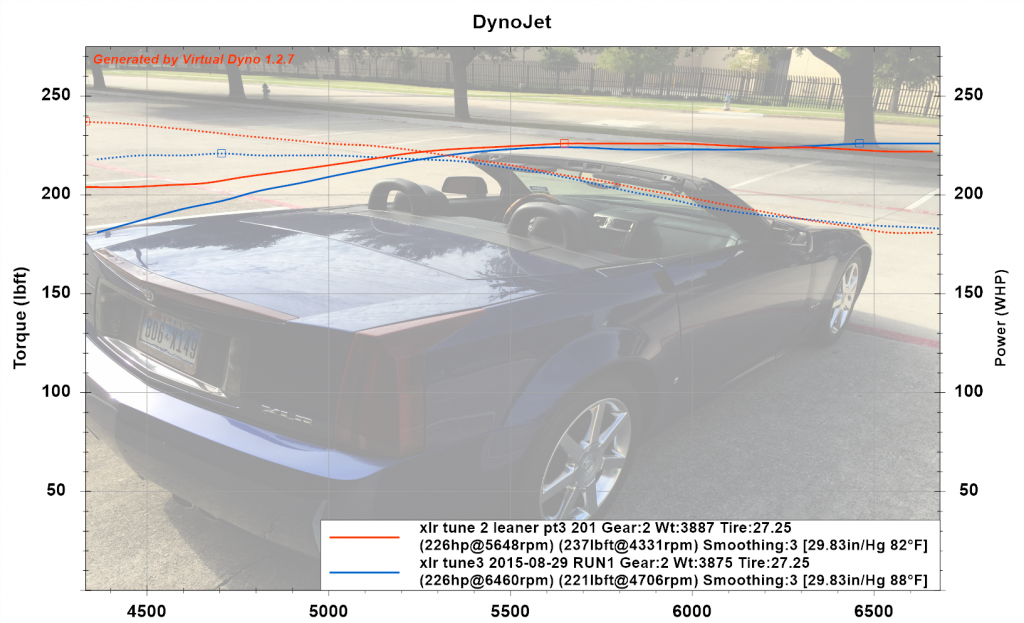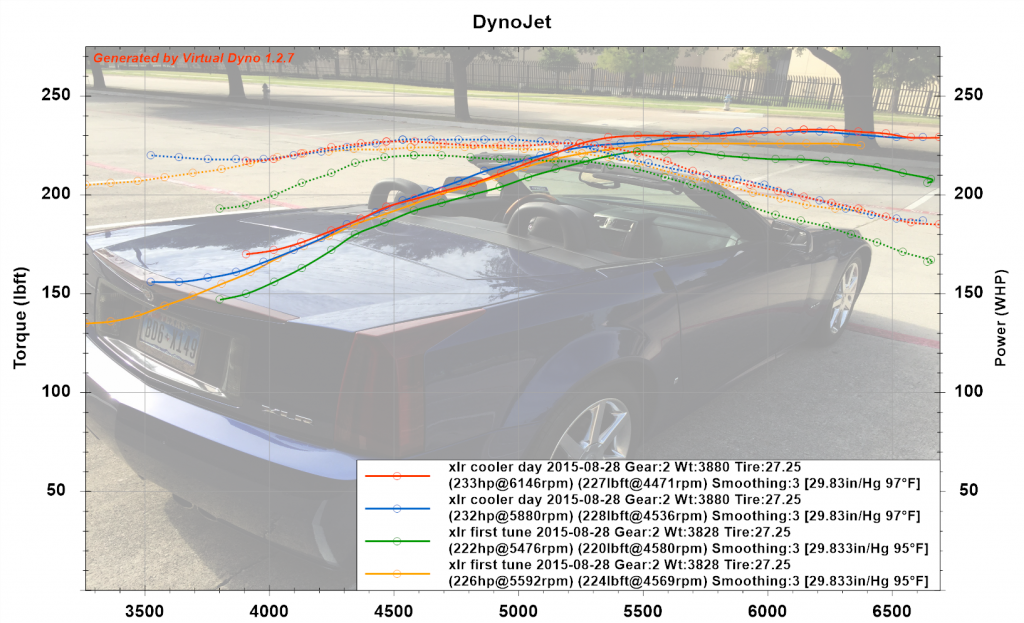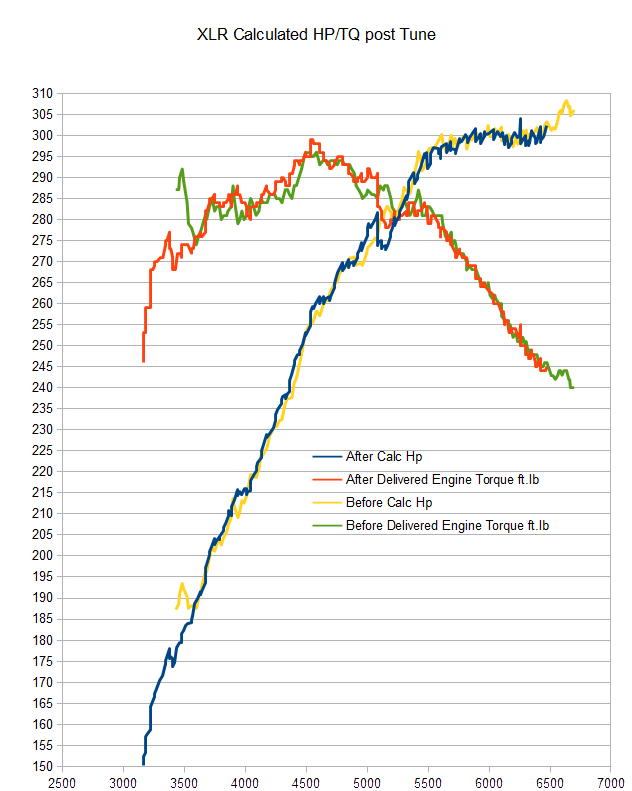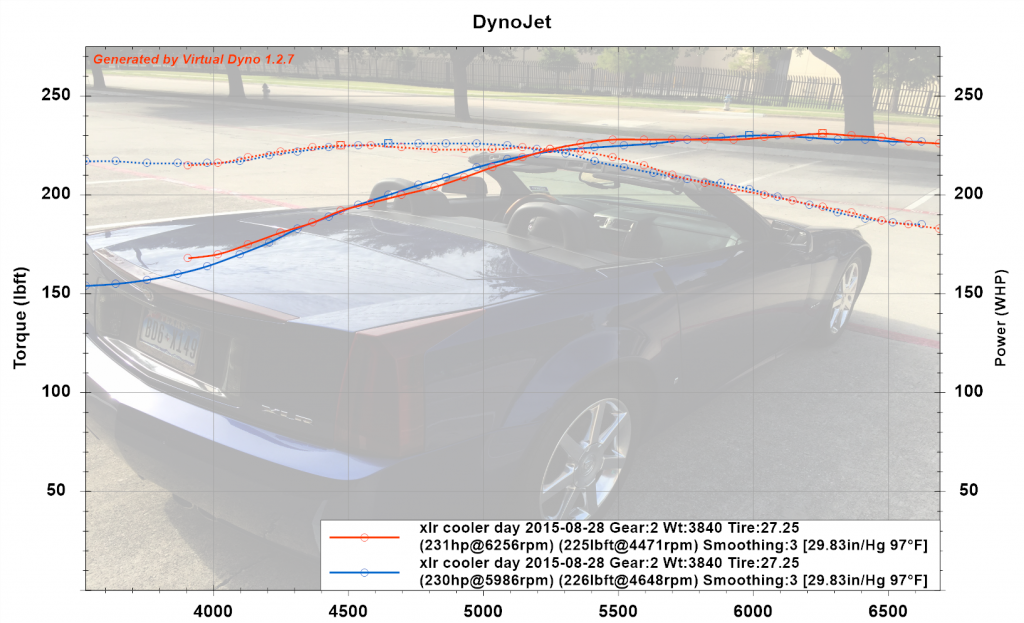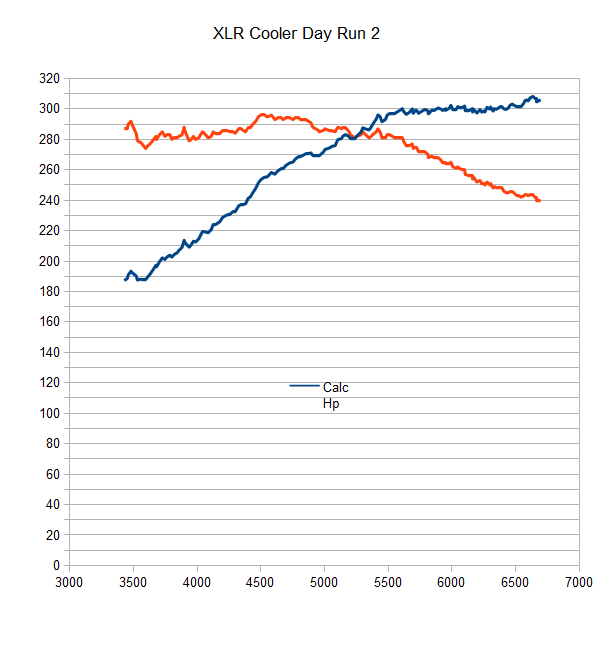Noting that in Tune 2 the 5500+ RPM response in baseline was better, I adjusted the PE table for Tune 3 to return to 1.176 from 5500 RPM+, (12.5:1) and kept 1.148 below that point (12.8:1). So from start, Tune3 basically ONLY has this change from stock.
The intake air was 6F hotter now at 88F, and I adjusted Virtual Dyno 12 lbs for 2 gals missing fuel. The red line was from Tune2 this morning, and the blue line is from Tune3 later in the morning. The engine coolant was now at 203F, and we are getting IAT retard where earlier we were actually getting IAT advance.
Calculated hp peak 310.7 hp at 6688 rpm, peak torque 305 at 3328 rpm.
I think we see that, assuming they are equivalent below 5500 RPM, tune3 in blue has a better trend from 5500 rpm up than tune2 in red. The difference is however subtle.

